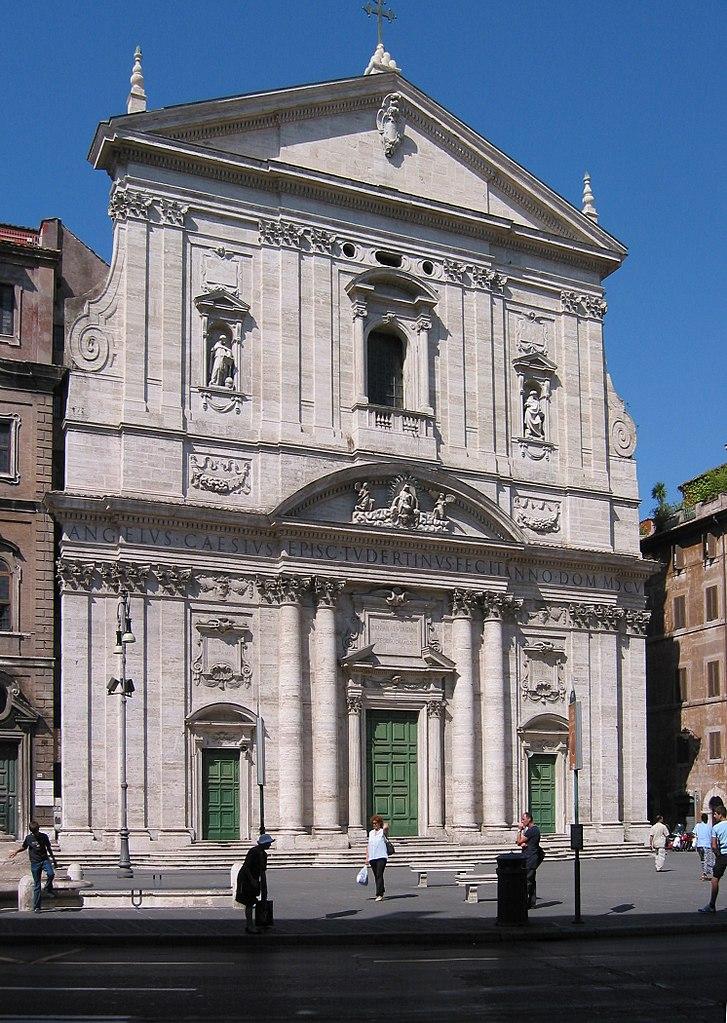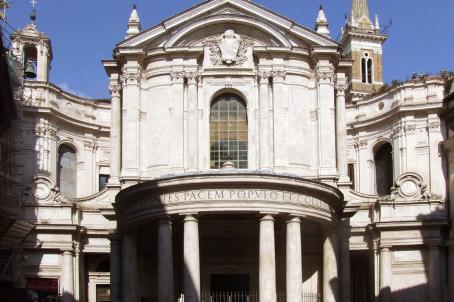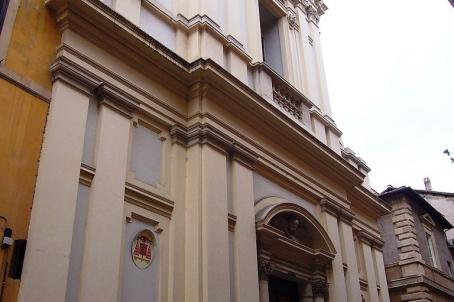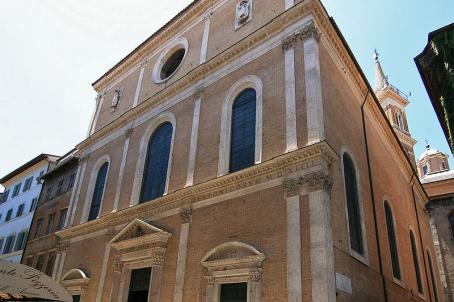Chiesa Nuova
Santa Maria in Vallicella, traditionally called Chiesa Nuova, has existed since the 13th century. When the old church was assigned to the new congregation of the Oratory in 1575, it was in a state of ruin and the congregation decided to rebuild it. The work is finished at the beginning of the 17th century with the façade but the dome is modified in 1650 by Pietro da Cortona and a bell tower is added in 1666 by Camillo Arcucci.






